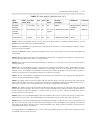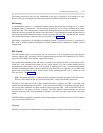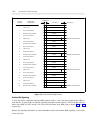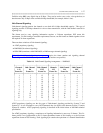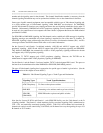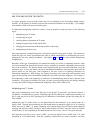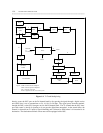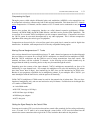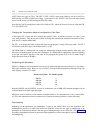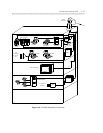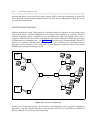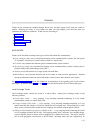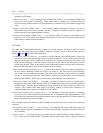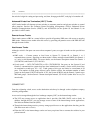MULTIPLEXED COMMUNICATION 1-31
_ ______________________________________________________________________________________
_ ______________________________________________________________________________________
_ ______________________________________________________________________________________
Compressing the Signal
Through a process called adaptive differential pulse-code modulation (ADPCM), voice transmissions can
be compressed so that they consume only half of their original bandwidth. This means that 24 T1 channels
can be compressed to 12 channels; and the contents of two T1 trunks can be condensed to one (see figure
1-9).
Devices that perform this compression function are called channel expansion multiplexers (CEMs).
Currently, the BCM-32000, the BCM-32000 Solitaire, and M44 service provide CEM capabilities. The
DATAPHONE II ACCUNET 740/741 multiplexers can also compress transmissions. Compressed voice from
the 740/741 cannot be recovered (decompressed) by any other equipment. This is because compression
algorithms differ among the various types of equipment.
Compression can be used only for voice and low-speed voice-grade data; it cannot be used for digital data
transmission. In addition, with compression, D4 is the only compatible framing option.
Altering Channel Assignments on T1 Trunks
After various channels have been multiplexed onto a T1 trunk, channel assignment can be altered through
the use of either a DATAPHONE II ACCUNET 740/741 multiplexer or a channel division multiplexer (CDM).
Both the 740/741 multiplexer and the CDM are used to merge transmissions from data sources, like
terminals and hosts, onto the available T1 channels. At the receiving end, the added channels may be
dropped from the trunk by a matching device or they may be routed through the switch.
Depending upon the contents of the input channels, 740/741 multiplexers automatically set byte or bit
interleaving on a per-channel basis. For example, the multiplexer will select bit interleaving for subrate
data (data slower than 56 kbps), byte interleaving for DS1 data, and bit interleaving for PCM voice.
Because it uses proprietary algorithms for its multiplexing scheme, if you multiplex with a 740/741, you
must demultiplex with the same device, with the options set identically.
Unlike 740/741 multiplexers, CDMs cannot be used for the transmission of subrate data. They use byte-
interleaved multiplexing only, and can send and receive only D4 frames. Facilities that can be merged onto
a T1 trunk at a CDM include:
• 4-wire E&M trunks
• RS-232C lines (up to 19.2 kbps)
• RS-449 lines (up to 64 kbps)
• DDS data-port adaptors
• OCU data ports
Getting the Signal Ready for the Central Office
Customer service units (CSUs) are devices that enforce central office standards for line coding and framing
over a T1 trunk. If a T1 trunk is to be routed through a central office, a CSU must be inserted into the
transmission stream somewhere after origin of the T1 line, but before the trunk exits the premises.



